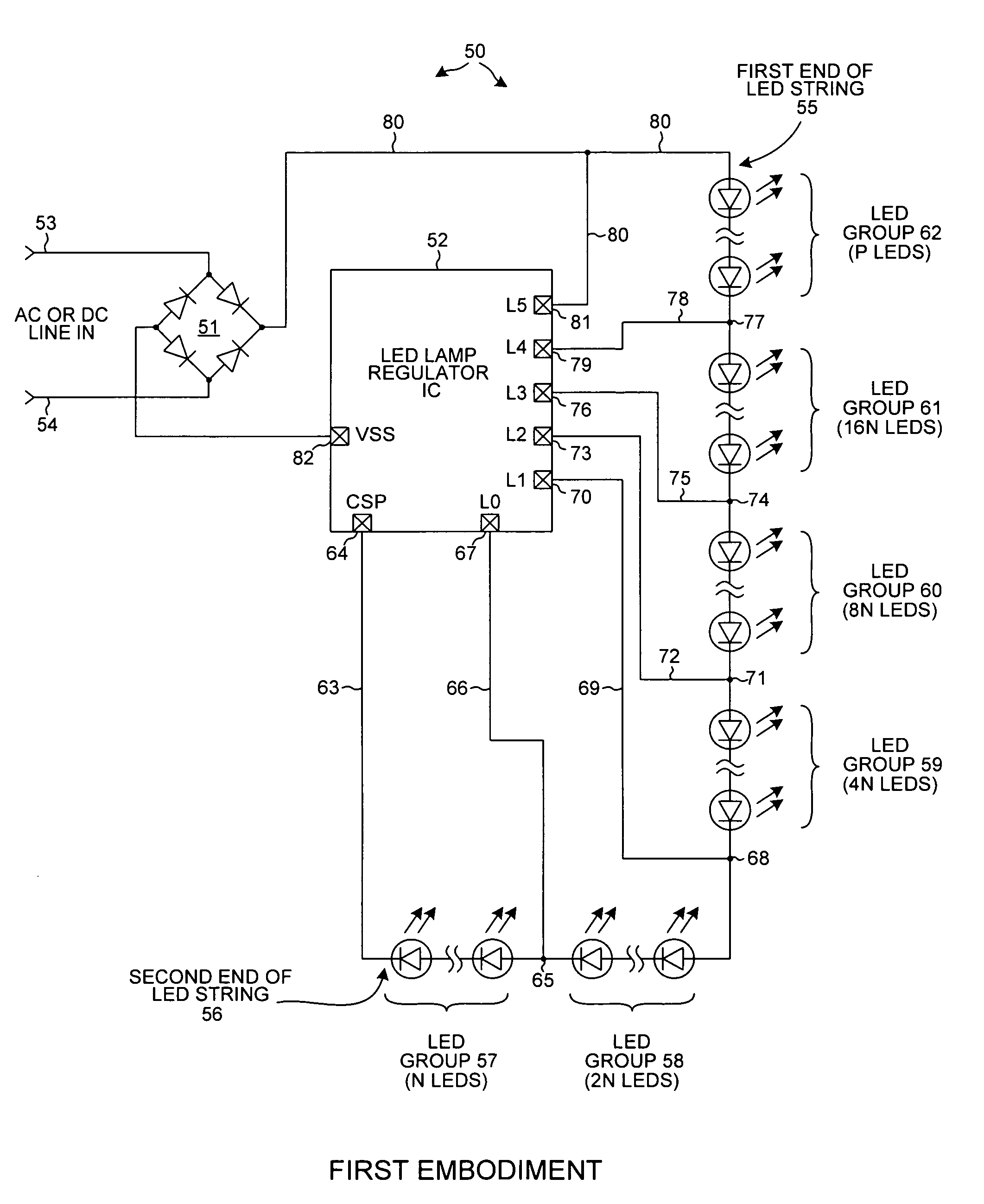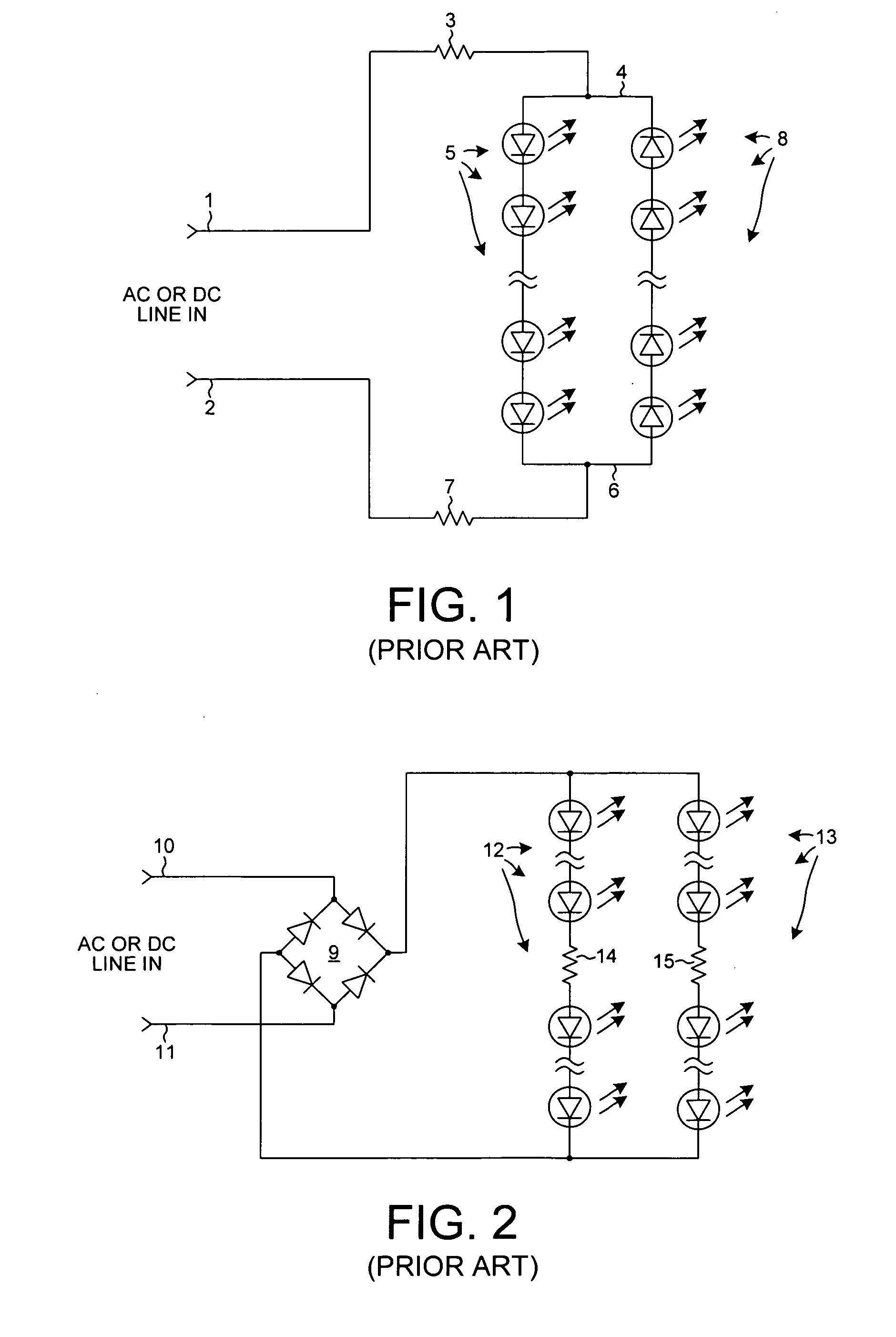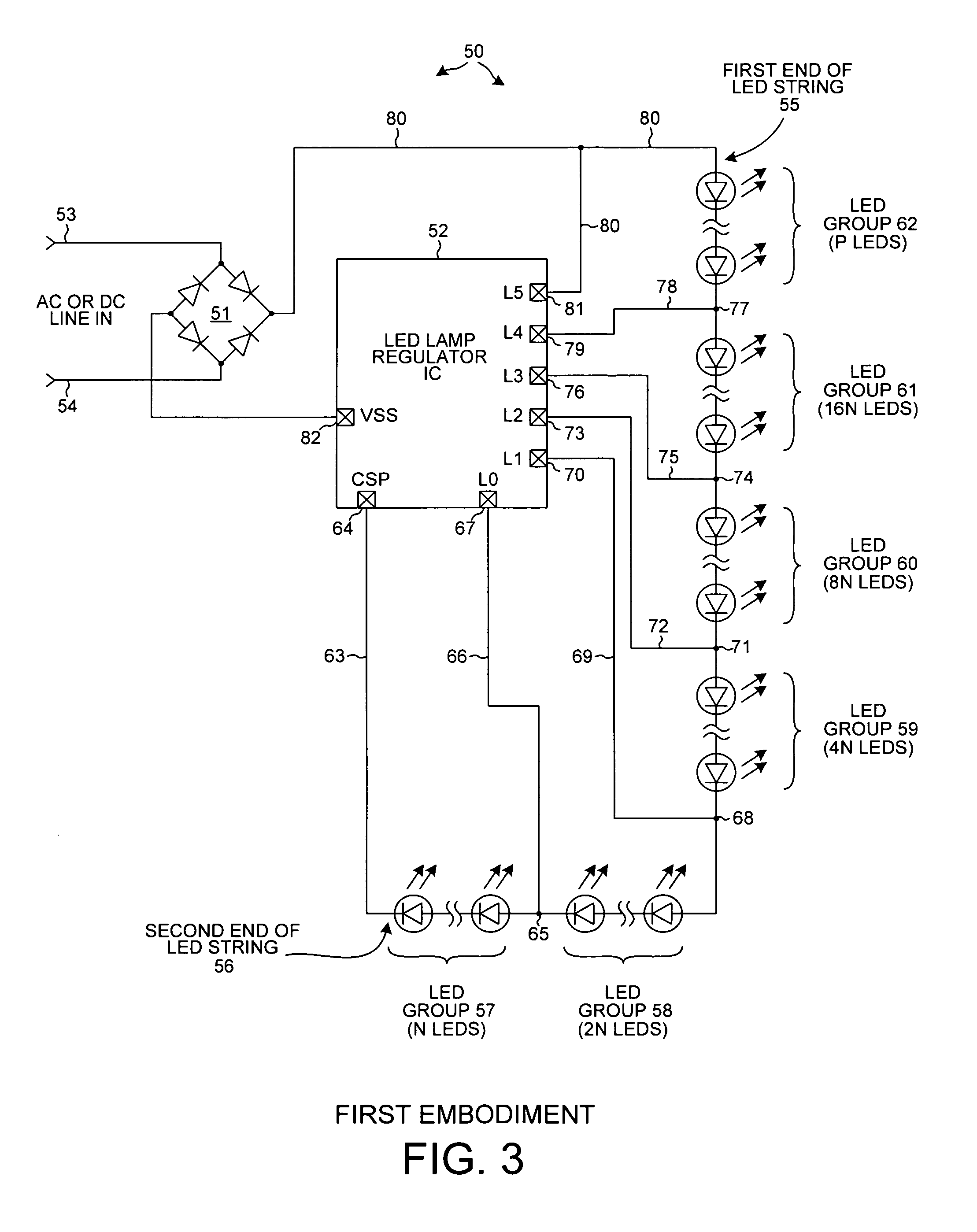Reduced flicker AC LED lamp with separately shortable sections of an LED string
a technology of led lamps and led strings, applied in the direction of electric variable regulation, process and machine control, instruments, etc., can solve the problems of one watt resistive power loss for a four watt led lamp, power loss, and lower efficiency of led lamps and heat generation, so as to prevent electrolytic capacitor failure, reduce component count, and improve lamp reliability.
- Summary
- Abstract
- Description
- Claims
- Application Information
AI Technical Summary
Benefits of technology
Problems solved by technology
Method used
Image
Examples
first embodiment
[0038]FIG. 3 is a circuit diagram of an AC LED lamp 50 in accordance with a The AC LED lamp 50 includes a full-wave rectifier 51, an LED lamp regulator integrated circuit (also referred to as a control integrated circuit) 52, and a string of series-connected LEDs. Rectifier 51 is connected to input power terminals 53 and 54 as illustrated. Either an AC or a DC line in input power signal is received on terminals 53 and 54.
[0039]The LED string has a first end 55 and a second end 56. The LED string in turn includes several sections 57-62. A section is also referred to here as a group of LEDs. The illustrated nodes between the various LED groups are referred to here loosely in a non-technical sense as interconnection nodes. As illustrated in FIG. 3, second end 55 of the LED string is coupled via a conductor 63 to CSP terminal 64; interconnection node 65 of the LED string is coupled via a conductor 66 to L0 terminal 67 of integrated circuit 52; interconnection node 68 of the LED string ...
second embodiment
[0061]FIG. 13 is a diagram of an AC LED lamp 400. In this embodiment, the number of power switches is reduced as compared to the embodiment of FIGS. 3 and 4. Only LED groups 401, 402, 403, and 404 are switched, whereas the remaining LEDs form LED group 405, and this group 405 is always in the LED string current path. This embodiment has a simplified design but has slightly lower efficiency. In an example for a 110V AC line in signal, LED groups 401, 402, 403, and 404 have two, four, eight, and sixteen LEDs respectively (corresponding to N=2), whereas LED group 405 has approximately eighteen LEDs (corresponding to M=18). In an example for a 220V AC line in signal, LED groups 401, 402, 403, and 404 have four, eight, sixteen, and thirty-two LEDs respectively (corresponding to N=4), whereas LED group 405 has approximately 36 LEDs (corresponding to M=36). To reduce flicker, a valley fill capacitor 406 is provided. Capacitor 406 is connected between node 407 and a CAP terminal 408 of inte...
third embodiment
[0065]FIG. 16 is a diagram of a AC LED lamp 600 includes power input terminals 601 and 602, a rectifier 603, an integrated circuit 604, and five groups of LEDs 605-609. Within integrated circuit 604 there are five power switches 610-614 for controlling the five corresponding groups of LEDs 605-609. Each group of LEDs has the same N number of LEDs, where N is an integer. In this embodiment, controller 615 operates in a similar way as controller 92 of FIG. 5. Decoder 616, on the other hand, also handles evening out power dissipation between all the groups of LEDs.
[0066]FIG. 17 is a more detailed diagram of decoder 616 of FIG. 16. A lookup Read-Only Memory (ROM) circuit 617 receives the three-bit LEDCOUNT value as well as a three-bit SCATER signal 618 as inputs. From these six bits the lookup ROM circuit 617 outputs a five-bit code NG0-NG4 that is level-shifted by a level shift circuit 619. As directed by the five-bit code, level shift circuit 619 drives the power switches 605-609. Th...
PUM
 Login to View More
Login to View More Abstract
Description
Claims
Application Information
 Login to View More
Login to View More - R&D
- Intellectual Property
- Life Sciences
- Materials
- Tech Scout
- Unparalleled Data Quality
- Higher Quality Content
- 60% Fewer Hallucinations
Browse by: Latest US Patents, China's latest patents, Technical Efficacy Thesaurus, Application Domain, Technology Topic, Popular Technical Reports.
© 2025 PatSnap. All rights reserved.Legal|Privacy policy|Modern Slavery Act Transparency Statement|Sitemap|About US| Contact US: help@patsnap.com



